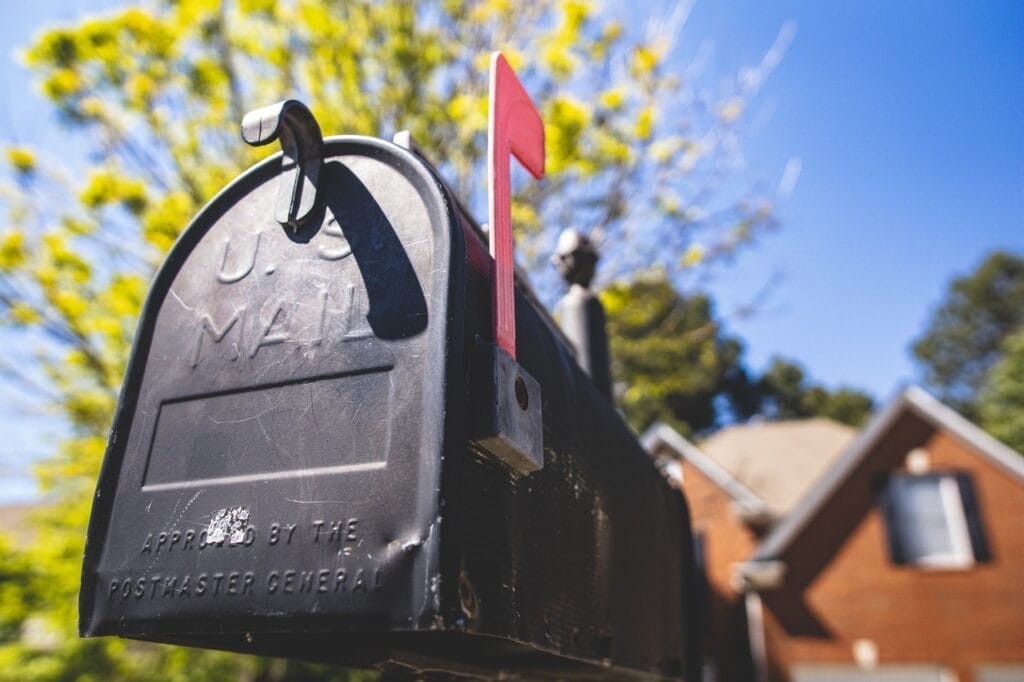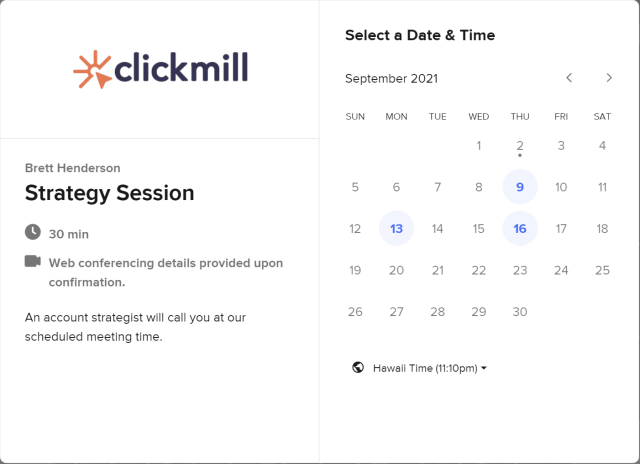Church advertising helps churches reach more people and grow. Churches use social media, Google Ads, flyers, and events to advertise. Effective church ads need a clear plan and smart use of platforms like Facebook and Google.
Are you trying to learn how to do church advertising with the hope of growing your weekly attendance or increasing your online presence?
Well, this is the church advertising blog for you!
Let’s discover how to get more people in church!
Section 1: How Do Churches Advertise Today?
In the not-so-distant past churches used mass media, church print ads, and billboards to reach out to their community.

Traditional advertising was effective for reaching large and diverse groups of people, creating brand awareness. These types of advertising are often expensive and out of reach for the typical small or mid-size church. It is also very difficult to track the results of a billboard or a church print ad.
Today churches use targeted online advertising, social media, and SEO (Search Engine Optimization) for efficiency and tracking purposes.

Traditional forms of church advertising still exist today but most have been augmented or replaced with digital advertisements.
Facebook ads for churches and Google ads for churches offer many benefits over traditional forms of church advertising. Some of these benefits are listed below:
- It has become much easier to target very specific audiences with online church advertising.
- Digital church advertising is more relevant to target audiences and gets higher engagement rates.
- Digital church advertising provides real-time tracking & analytic data.
- You can edit and update digital church advertisements quickly.
This makes digital ad campaigns more cost-effective compared to television or other offline advertising methods.

Get A Proven Marketing Plan That Increases Enrollments When You Book A Call Today!
Receive customized advice to help your school attract more families!
There are two main advertising platforms that most churches choose to advertise through, Facebook Ads and Google Ads.
If you want to learn more about which of these options is best for your ministry, check out our article, Church Ads: Facebook Ads Vs. Google Ads For Church Advertising
If you are enjoying this post – you will really love our ultimate guide to church marketing titled, Digital Marketing For Churches: #1 Church Marketing Guide.
Section 2: When Is Church Advertising Worth The Cost?
Too many churches are currently throwing money into the black hole of advertising with no idea if they are getting a healthy return on their church advertising investment.

The first way you can be sure digital advertising is a wise way to spend your church advertising budget is to identify measurable goals you would like to see your advertising accounts accomplish.
Professional marketers call these numbers Key Performance Indicators (KPI’s.)
Is your goal to get people to “save my seat” OR do you want people to “sign up to learn more about a relationship with Jesus?” Do you want to increase donations, get people to sign up on an email list, or sell merchandise? You will need to identify your key performance indicators in advance.

Only when you can identify how much it costs to generate your specific result (like getting someone in the church doors) can you determine if that result is worth a specific number of dollars you are paying to make it happen.
Side Note: Those who attend your church obviously carry a greater spiritual value than the money that they bring into your ministry. At the same time, to advertise successfully it’s necessary to quantify the monetary benefits of individuals to your ministry. If you operate at a financial loss long enough, you will have to close your doors. Your goal is to make sure you AT LEAST break even on your advertising strategy.
Church leaders often feel uncomfortable with the notion of quantifying the financial benefit of their congregants. Unfortunately, the ONLY successful way to advertise is to know if you are bringing more money into your church than you are spending on advertisements. Understanding the cost-benefit analysis of your church advertising campaigns is actually good stewardship of your ministries’ financial resources.
Many churches we have worked with have discovered (to their dismay) that they have wasted thousands of dollars in advertising that did not accomplish any meaningful results because they didn’t measure advertising profit margins properly.
Here is how to decide if your church advertising is worth the cost.
Begin by reviewing your attendance records and your giving records. You will want to discover the lifetime value of the average church-goer.
Lifetime Value is the average amount of giving (or income) you can expect from an attendee throughout their time at your church. This means you will need to find out how long the average person/ family attends your church before they move on. You will then need to look at weekly attendance numbers.
Divide your average weekly tithe by the average number of weekly church-goers and you will begin to understand how much each individual contributes per week. Then multiply this number by the length of time the average church-goer attends your ministry.

Get A Proven Marketing Plan That Increases Enrollments When You Book A Call Today!
Receive customized advice to help your school attract more families!
Here is what the math looks like (It’s not as hard as it sounds):
Consider these numbers for easy math:
- Average Attendance: 500 people attend service on average each week.
- Average Weekly Tithes: Tithes average $5,000 per week.
- Average Lifetime Attendance: The average church-goer attends for 18 months.
- Average Person’s Weekly Tithe: $5,000 per week / 500 people = $10 per person per week.
- Lifetime Value: $10 per person per week X 18 Months = $180 projected lifetime value per churchgoer.
- Maximum Cost Of Advertising: This means your advertising should get someone in the front door for under $180 per person.
This usually means you will need 3-4 new guests to “save my seat” on your website for under $180. Your goal is to follow up with all of these new leads and to get at least one of them to join for church services.
In this example, the key performance indicator for your advertising account would be to get each “save my seat” for approximately $45 – $60 each.
Be aware that NEW advertising campaigns are always less efficient than campaigns that have been optimized over a number of months. If your cost per “save my seat” is high when you begin, it can be brought down dramatically as you get more data and optimize your advertising account.
This holds true for Google and Facebook advertising for churches.

Get A Proven Marketing Plan That Increases Enrollments When You Book A Call Today!
Receive customized advice to help your school attract more families!
Section 3: What is The Church Advertising Process?
What is the most effective process for cost-effective church advertising?
- Identify your targeted audience.
- Discover the most deeply felt needs your audience struggles to meet (ie, what are their biggest problems?).
- Create a method of meeting the needs of your audience better than anyone else.
- Set up church advertisements that tell your audience you can meet their specific needs.
- Track your results as the data comes in.
- Optimize your advertising campaigns to bring down your cost per result.
If you would like more in-depth training on this process, you can join over 1,500 students in our Free online course, Church Marketing Like Jesus Did It: The Biblical Way To Grow Your Church.
Section 4: Facebook Ads For Churches
Facebook ads are typically the default advertising platform many churches use. Here are some of the benefits of using Facebook ads for churches.
- You can reach very specific audiences due to the demographic information, interests, and life events that Facebook ads allow you to target.
- Facebook ads excel at branding and moving people to make impulse decisions.
- Facebook ads can be used to generate audience engagement both on Facebook and on your website.
- Through Facebook ads, you can also advertise your church on Instagram, Messenger, and Audience Network.
- Churches can use their existing website or Facebook page to run ads.
- Facebook makes it very easy to track the advertising campaign results.
- There are typically no contracts with Facebook ads.
- Google ads allow you to retarget individuals who have visited your website.
- With time, the Facebook ads algorithm will help you target people who are more likely to be interested in your church.
(You can set up your Facebook ads manager account here.)
While Facebook is a great option when considering how to advertise a church, it’s not the only option.
Section 5: Google Ads For Churches
Google ads for churches are another excellent option for your ministry team to consider getting the word out. Like Facebook, Google ads excel in specific areas.
Most notably, Google ads give you the ability to target highly motivated people who intend on following up google searches like “church near me” with action. This means they often show up at your church shortly after engaging with your ad. In addition:
- Google Ads has a focus on tracking website sign-ups (conversions) and sales. This helps you identify if you are effectively stewarding your advertising budget (more on this later).
- Google Ads allows you to promote your church through Youtube ads, and on the google display network which consists of websites across the internet.
- Google ads allow you to retarget individuals who have visited your website.
Note: Both Facebook ads and Google ads offer you the ability to do local church advertising. This is done by defining a specifically targeted geofence around your church. Most churches set a 10-mile radius around their church in which to show ads. That said, the Google Ad Grants for churches is not going to do well in the local church advertising arena. The Google Grant shines with national & international church advertising campaigns, but more on this later.

Get A Proven Marketing Plan That Increases Enrollments When You Book A Call Today!
Receive customized advice to help your school attract more families!
If you would like to learn more about whether Facebook Ads or Google Ads is right for your church, check out our article: Church Ads: Facebook Ads Vs. Google Ads For Church Advertising [2021].
Google Ads also provides registered nonprofit organizations up to $10,000 of free advertising.
This is known as the Google Ad Grant.
Let’s discuss this more now.
Section 6: Google Ad Grants For Churches
Pastors often ask me why Google is giving away so much money in their google ad grant. They also ask, “Is the Google Ad Grant too good to be true?” My answer: “Nope!”
Here’s why.
Google makes billions of dollars selling ad space online and they reduce their tax burden on their profit.
Their Google Ad Grants count as a tax-deductible donation that counteracts their annual tax burden. So as it turns out, the Google grant helps both your church and Google.
The Google grant allows nonprofit organizations to spend up to $10,000 each month on the google search engine.
Here is what to expect if you set up a Google Grant correctly.
Google advertisements are paid by the click. Clicks can range from ten cents to over $100 but the average click for most churches costs around $2. With a budget of $10,000, your ministry could be attracting an additional 3,000 to 5,000 website visitors each month.
- The Google Ad Grant excels at advertising nationally and internationally.
- The Google Ad Grant excels at generating large email lists you can follow up with to increase donations, sales, online participation, etc.
- The Google Ad Grant is also the most cost-effective way to do international missions & ministry online.
Many of our clients have shared the Gospel tens of thousands of times in almost every country of the world through the use of the Google Grant.
If you want to learn more about how to use the Google Grant to do digital missions, you can check out our book that goes in-depth with this and other digital ministry strategies.
The Digital Missionary: Reaching The Ends Of The Earth Without Leaving Home
You can get the eBook on Amazon or you can get 10% off here at Clickmill by entering the coupon “Get-10” at checkout.
Some of the cons of the Google Grant include:
- The Google Ad Grant requires a well-established marketing plan and conversion-optimized website (your website needs to be very effective at getting people to take action and sign-up).
- The Google Ad Grant has a number of monthly requirements that must be met or the account will be deactivated.
- It’s best to have a lot of preexisting digital content – or have the ability to make the content relatively quickly.
If you would like to further discuss if the Google Ad Grant is right for your church, feel free to book a free strategy session with us.

Get A Proven Marketing Plan That Increases Enrollments When You Book A Call Today!
Receive customized advice to help your school attract more families!
Section 7: The Best Church Advertising Strategy

There is a lot of hype in church leadership circles today about Facebook Ads and other social media marketing strategies.
While each advertising option has its strong points, there is no silver bullet in marketing.
The best church advertising strategy will almost always utilize a multi-prong strategy.
Many of our clients choose to do something like this:
- We create a paid Google Ads account that brings motivated church-goers into the front door of the church.
- Once the Google Ads are bringing new visitors into the church profitably, they increase their advertising budget to scale up their results.
- Churches then use the demographic data they received from their successful Google Ads campaign to target the same audiences on Facebook. They use Facebook to increase brand awareness and drive additional website traffic.
- Once the Facebook Ads are profitable, they increase their advertising budget to scale up the results.
- The churches then create a retargeting campaign either through Facebook Ads or Google Ads that show ads across the internet only to people who have already visited the church’s website but have not taken action.
- Once the retargeting ads are shown to be profitable, the church then scales up their ad spend to increase their results.
Of course, your church marketing strategy will vary based on the goals and KPI’s of your ministry. If the goal of your advertising campaigns was to reach the lost, it may be more effective to BEGIN with a Google Grant instead of a paid advertising account. Of course, there are plenty of other ways to set up your church marketing strategy for best results.

Get A Proven Marketing Plan That Increases Enrollments When You Book A Call Today!
Receive customized advice to help your school attract more families!
Remember: As long as your advertising dollars reap a harvest, digital church advertising will always be a blessing to your ministry.
This about sums it up for this post on digital church advertising.
If you are looking for a church advertising agency, consider scheduling a free call to discuss your marketing goals!
CHURCH ADVERTISING FAQS
Church advertising has shifted from traditional methods like mass media, print ads, and billboards to more targeted online advertising, social media, and SEO. This change allows for more specific audience targeting, higher engagement rates, and better tracking and analytics.
The two main platforms for digital church advertising are Facebook Ads and Google Ads. These platforms offer benefits such as precise audience targeting, real-time tracking, and the ability to quickly edit and update ads.
Church advertising is worth the cost when it meets measurable goals and provides a healthy return on investment. Churches should identify key performance indicators (KPIs) like attendance increase or online engagement and ensure the cost of advertising is justified by the results.
Churches should identify their target audience, understand their most deeply felt needs, create content that meets these needs, set up targeted ads, track results, and optimize campaigns for cost-effectiveness.
A multi-pronged strategy is recommended. Start with conversion-focused Google Ads to bring in motivated visitors, then use demographic data from Google Ads for targeted Facebook campaigns. Finally, implement retargeting ads on both platforms to engage visitors who haven’t taken action yet.
Question: What advertising platform do you think is best for your ministry?
Let us know in the comments!

Responses
Please pray that God will bless our Little Oak Garden a Christian tourism holiday home project in Kenya with international partners.
Email: littleoakgarden@gmail.com